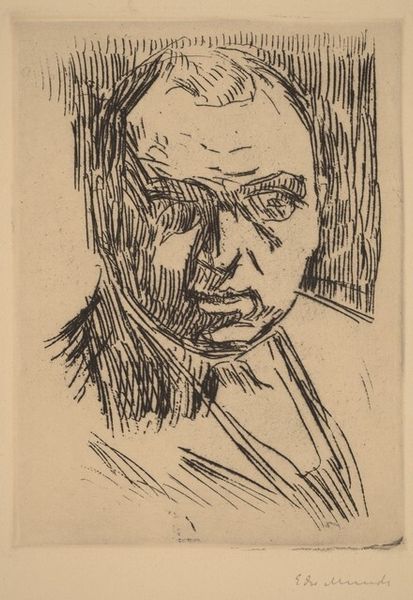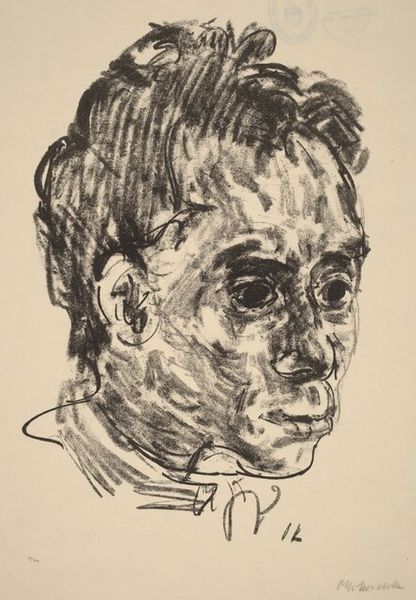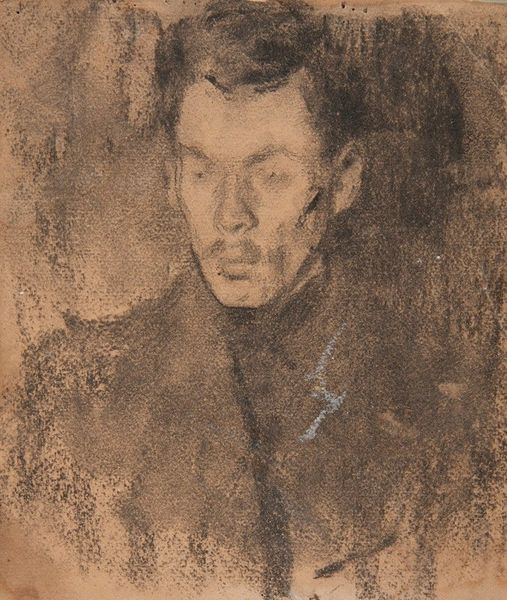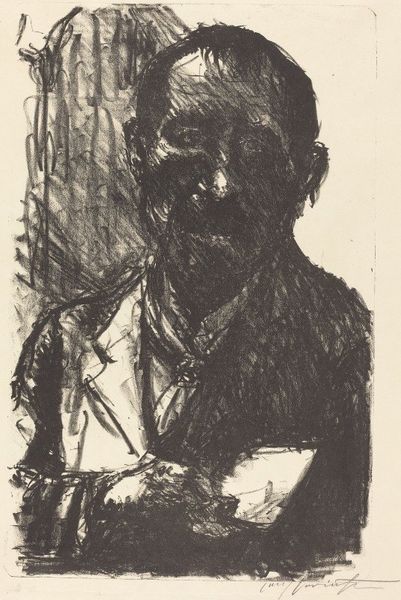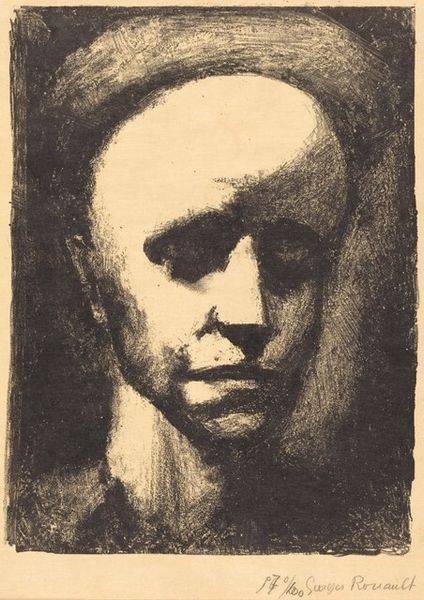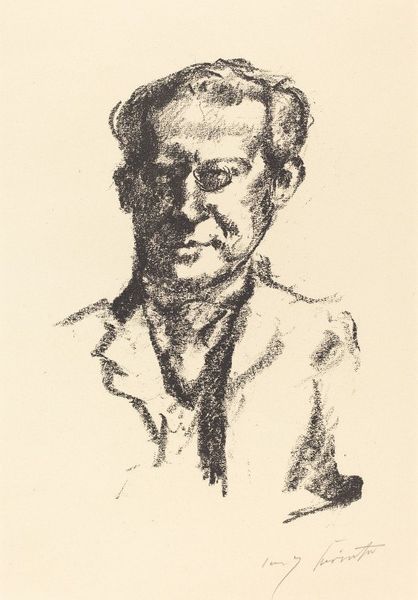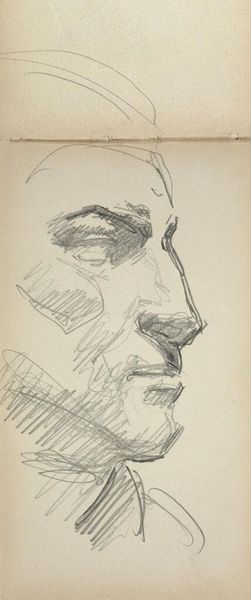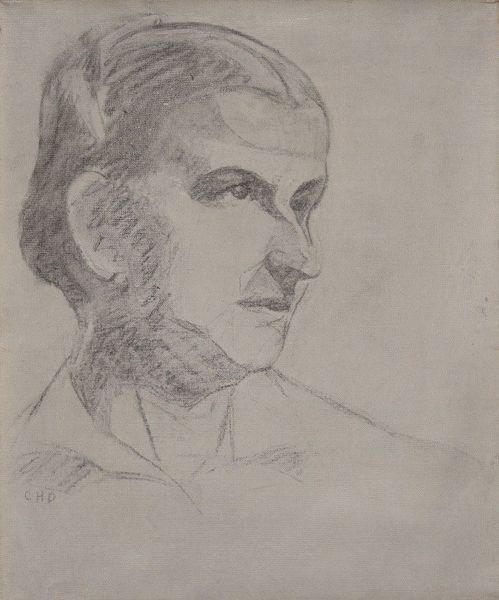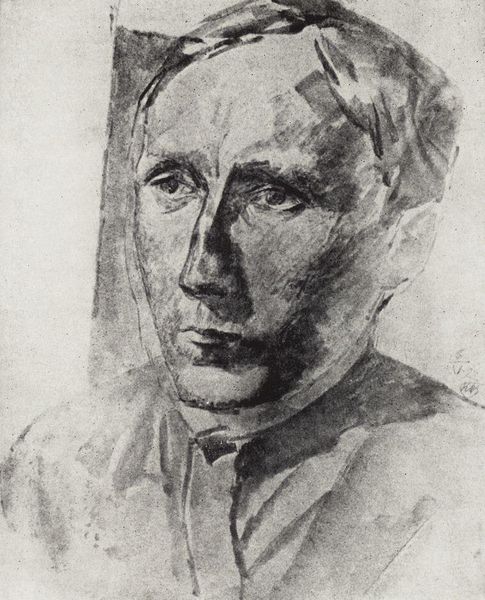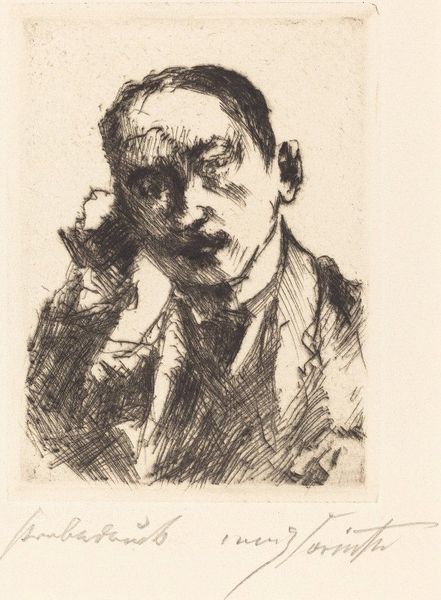
drawing, pencil
#
portrait
#
drawing
#
pencil sketch
#
pencil
#
post-impressionism
#
realism
Copyright: Public domain
Curator: This pencil drawing, titled "Head of a Man, Bareheaded," was created by Vincent van Gogh in 1885. It's currently housed at the Van Gogh Museum in Amsterdam. It strikes me as quite stark, almost severe. What do you make of the composition, visually speaking? Editor: I'm struck by the intense concentration of the line work around the man’s face—specifically, the eyes seem to almost disappear within these deep, shaded hollows. It evokes a sense of fatigue, or perhaps even internal turmoil, that contrasts sharply with the loose, almost careless hatching that suggests the garment beneath. Curator: That is interesting, I'm more concerned by Van Gogh’s artistic exploration of peasantry and working-class people. Consider that in 1885 he was deeply involved in portraying the lives and labor of rural folk in the Netherlands. This is not just a portrait, but a depiction of a working-class subject during an era of industrial change. I want to highlight Van Gogh’s labor himself as a craftsman making the art! Editor: A fair point. And to me, the formal contrast also tells a story. Observe how the sharp angles of the face—the nose and jawline in particular—seem almost aggressively rendered. How might this interplay of form and context tell us something more profound about his approach? Curator: Yes, I would add it represents both the social reality and Van Gogh’s reaction to social reality, which explains that emotional turmoil. He portrays how rural laborers were struggling due to economic inequalities of the era, I mean… Look at those lines as part of production; the work of an artist reflecting working class themes and material struggle. Editor: Your point is well taken; those choices create that kind of emotional landscape. The asymmetry—the way the right side of the face seems to dissolve into shadow, while the left remains sharply defined, the visible strokes of labor, so to speak—certainly contributes to the unease the piece generates. It avoids the polish of more academic portraits, right? Curator: Exactly, and the paper and pencil itself are commodities! These were mass produced items and using this particular media, compared to high-art materials, he is connecting himself to popular culture and relatable visuals of working class imagery. Editor: It provides a glimpse, however, into his aesthetic vision. I think it would be enriching if visitors kept in mind how material realities helped produce powerful compositions that, ultimately, moved viewers, like myself. Curator: Agreed! Recognizing the artistic choices with both a deep and historical context gives greater appreciation to the social impact that Van Gogh can deliver for contemporary viewers.
Comments
No comments
Be the first to comment and join the conversation on the ultimate creative platform.
